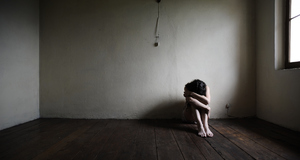The History of Mental Illness: From Skull Drills to Happy PillsSome treatment options existed beyond family custody and care, such as lodging the mentally ill in workhouses or checking them into general hospitals where they were frequently abandoned. The clergy also played a significant role in treating the mentally ill as “medical practice was a natural extension of ministers’ duty to relieve the afflictions of their flocks” (Houston). Private madhouses were established and run by members of the clergy to treat the mentally afflicted who could afford such care. Catholic nations regularly staffed mental health facilities with clergy, and most mentally ill individuals in Russia were housed in monasteries until asylums spread to this region of the world in the mid-1800s (Porter). To relieve mental illness, regular attendance in church had been recommended for years as well as pilgrimages to religious shrines. Priests often solaced mentally disturbed individuals by encouraging them to repent their sins and seek refuge in God’s mercy (MacDonald 176). Treatment in clergy-run facilities was a desirable alternative as the care was generally very humane, although these establishments could not treat the whole of the mentally ill population, especially as it seemed to grow in number. In order to accommodate the burgeoning amount of mentally ill individuals, asylums were established around the world starting, most notably, from the sixteenth century onward. The first institution to open its doors in Europe is thought to be the Valencia mental hospital in Spain, 1406 CE (Butcher 36). Although not much is known about the treatment patients received at this particular site, asylums were notorious for the deplorable living conditions and cruel abuse endured by those admitted.For many years, asylums were not facilities aimed at helping the mentally ill achieve any sense of normalcy or otherwise overcome their illnesses. Instead, asylums were merely reformed penal institutions where the mentally ill were abandoned by relatives or sentenced by the law and faced a life of inhumane treatment, all for the sake of lifting the burden off of ashamed families and preventing any possible disturbance in the community. The majority of asylums were staffed by gravely untrained, unqualified individuals who treated mentally ill patients like animals. A case study describes a typical scene at La Bicetre, a hospital in Paris, starting with patients shackled to the wall in dark, cramped cells. Iron cuffs and collars permitted just enough movement to allow patients to feed themselves but not enough to lie down at night, so they were forced to sleep upright. Little attention was paid to the quality of the food or whether patients were adequately fed. There were no visitors to the cell except to deliver food, and the rooms were never cleaned. Patients had to make do with a little amount of straw to cover the cold floor and were forced to sit amongst their own waste that was also never cleaned up (Butcher 37). These conditions were not all unique to La Bicetre, and this case study paints a fairly accurate picture of a typical scene in asylums around the world from approximately the 1500s to the mid-1800s, and in some places, the early 1900s. The most infamous asylum was located in London, England—Saint Mary of Bethlehem. This monastery-turned-asylum began admitting the mentally ill in 1547 after Henry VIII announced its transformation. The institution soon earned the nickname “Bedlam” as its horrific conditions and practices were revealed. Violent patients were put on display like sideshow freaks for the public to peek at for the price of one penny; gentler patients were put out on the streets to beg for charity (Butcher 36). Soon after the establishment of “Bedlam,” other countries began to follow suit and founded their own mental health facilities. San Hipolito was built in Mexico 1566 and claims the title of the first asylum in the Americas. La Maison de Chareton was the first mental facility in France, founded in 1641 in a suburb of Paris. Constructed in 1784, the Lunatics’ Tower in Vienna became a showplace. The elaborately decorated round tower contained square rooms in which the staff lived. The patients were housed in the spaces between the walls of the rooms and the wall of the tower and, like at Bedlam, were put on display for public amusement (Butcher 37). When staff did attempt to cure the patients, they followed the practices typical of the time period—purging and bloodletting, the most common. Other treatments included dousing the patient in either hot or ice-cold water to shock their minds back into a normal state. The belief that patients needed to choose rationality over insanity led to techniques aiming to intimidate (Butcher 37). Blistering, physical restraints, threats, and straitjackets were employed to achieve this end. Powerful drugs were also administered, for example, to a hysterical patient in order to exhaust them (Butcher 37, Alexander 109). Around the mid-1700s, the Dutch Dr. Boerhaave invented the “gyrating chair” that became a popular tool in Europe and the United States. This instrument was intended to shake up the blood and tissues of the body to restore equilibrium, but instead resulted in rendering the patient unconscious without any recorded successes (Alexander 109). Although cruel treatment in asylums surely felt to the patients as if it had been going on for ages, conditions began to improve in the mid-to- late 1800s as reforms were called for, and this shameful and unenlightened period was somewhat brief in relation to the span of world history. One of the earliest reforms occurred at an asylum in Devon, England. This facility had employed opium, leeches, and purges as cures for mental illness, but in the mid-1800s emphasized non-restraint methods to affect patients’ health (Stigma 64). One of the most significant asylum reforms was introduced by Philippe Pinel in Paris. During the year of 1792, Pinel took charge of La Bicetre to test his hypothesis that mentally ill patients would improve if they were treated with kindness and consideration. Filth, noise, and abuse were eliminated quickly after patients were unchained, provided with sunny rooms, allowed to exercise freely on the asylum grounds, and were no longer treated like animals (Butcher 38). The same reforms were undertaken around this time by an English Quaker, William Tuke. Founded in 1796, the York Retreat in York, England was run by Tuke and other Quakers who stressed the importance of treating all people with respect and compassion, even the mentally ill. In keeping faithful to this ideal, the York Retreat was a pleasant country house, modeled on a domestic lifestyle, that allowed patients to live, work, and rest in a warm and religious environment that emphasized mildness, reason, and humanity (Butcher 38, Porter 103-104). This humanitarian movement spread across the Atlantic to the United States in the early 1800s. Stemming largely from the work of Pinel and Tuke, moral management emerged in America as “a wide-ranging method of treatment that focused on a patient’s social, individual, and occupational needs” (Butcher 39). Applied to asylum care, moral management focused on the mentally ill individual’s spiritual and moral development as well as the rehabilitation of their personal character to lessen their mental ailments. These goals were sought through encouraging the patient to engage in manual labor and spiritual discussion, always accompanied by humane treatment. Although moral management was highly effective, it largely failed to continue through the late 1800s for several reasons. First, ethnic prejudice created tension between staff and patients as immigration increased. The leaders of the moral management movement also failed to pass along their teachings, so there was a lack of replacements. Third, supporters of this movement did not realize that bigger hospitals differed from smaller ones in more ways than just size, leading to an overextension of hospital facilities. Biomedical advances also led to the demise of moral management as most believed that medicine would soon be the cure-all for physical as well as mental afflictions and, therefore, psychological and social help was not necessary. Lastly, the rise of a new movement called Mental Hygiene focused solely on the patient’s physical health and ignored their psychological disturbances. Although this new movement ended the effective reign of moral management and resulted in many patients becoming helpless and dependent, there were several humanitarian positives to Mental Hygeine (Butcher 39). Dorothea Dix was a schoolteacher forced to retire early due to her bouts of tuberculosis. Soon after she began teaching in a women’s prison and learned of the horrific conditions of jails, almshouses, and particularly mental health facilities, Dix commenced a forty-year long campaign to reform asylums called the Mental Hygiene movement. Although this movement did not directly affect patients’ mental illnesses, it raised millions of dollars to build hospitals that were suitable for proper care and influenced twenty American states to respond to her pleas for change, resulting in greater physical comfort of the patients. Dix also managed to oversee the opening of two institutions in Canada and completely revamp the systems of mental health care in Scotland and several other countries (Butcher 40).Continued on Next Page » Suggested Reading from Inquiries Journal
Inquiries Journal provides undergraduate and graduate students around the world a platform for the wide dissemination of academic work over a range of core disciplines. Representing the work of students from hundreds of institutions around the globe, Inquiries Journal's large database of academic articles is completely free. Learn more | Blog | Submit Latest in Psychology |


















